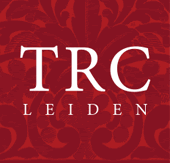The postcards must have been embroidered by machine. But which machine can imitate the free-style embroidery that was used for these cards? A machine that can do so was invented in 1828 by Josué Heilmann (1796-1848) in Mulhouse, France. The machine was further developed over the following decades by various engineers and companies in Britain, France, Germany and Switzerland.
 Print of a hand embroidery machine, late 19th century (TRC collection).Comparable machines were used well into the twentieth century for embroidering items for a lady's dressing table, such as hair brushes, comb cases, mirror bags and other essential items. These are often mistaken for being hand embroidered.
Print of a hand embroidery machine, late 19th century (TRC collection).Comparable machines were used well into the twentieth century for embroidering items for a lady's dressing table, such as hair brushes, comb cases, mirror bags and other essential items. These are often mistaken for being hand embroidered.
And in various sizes, this type of machine is still used in other, both domestic and factory settings. It is being used among others for haute couture embroidery, but also for decorating delicate handkerchiefs, shawls, table cloths and other embellished items. Switzerland remains an important source for these products.
Basically, this hand-embroidery machine uses a pantograph to transfer the stitches. Each stitch is drawn out on a large-scale design and then its position is traced by an operator using a point on one arm of the pantograph. A series of needles responds to the movement of the pantograph arm. Each needle has an eye in the middle for the thread, and two sharp ends.
 Detail of a hand embroidery machine in use. Textilmuseum, St. Gallen, Switzerland.
Detail of a hand embroidery machine in use. Textilmuseum, St. Gallen, Switzerland.
The needle is passed backwards and forwards through the ground cloth using a pincer system (double-sided pincer wagons), so imitating the action and appearance of hand embroidery. Each colour in the design is individually stitched (so all the blue parts, for example, are worked, and then the machine is re-threaded with a new colour), until the design is complete.

